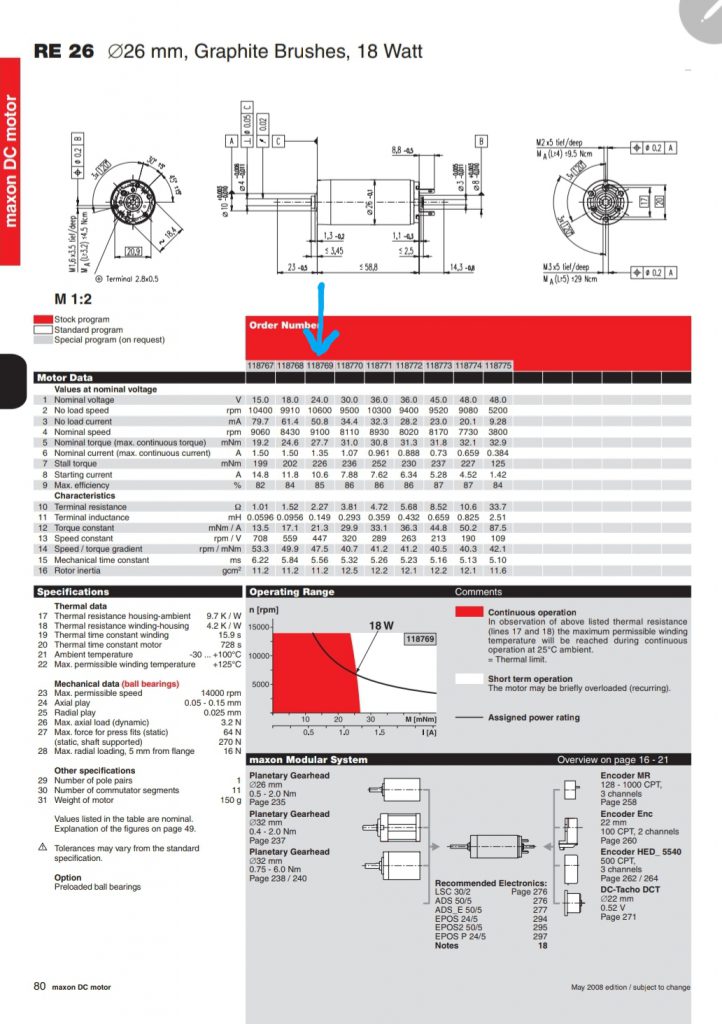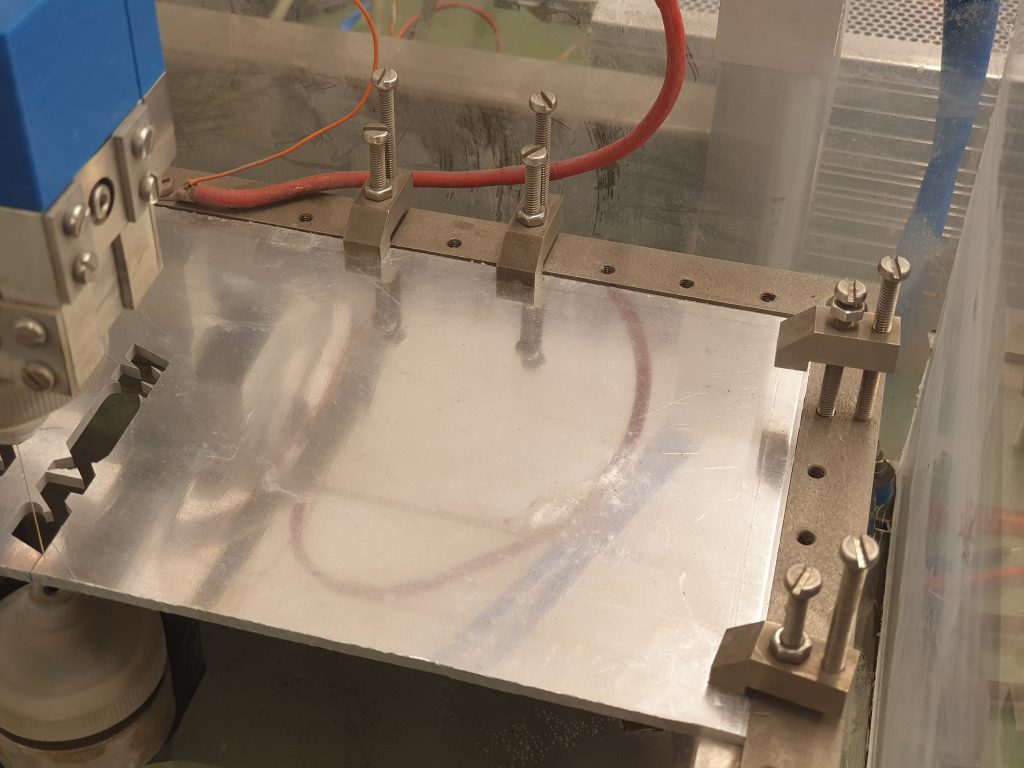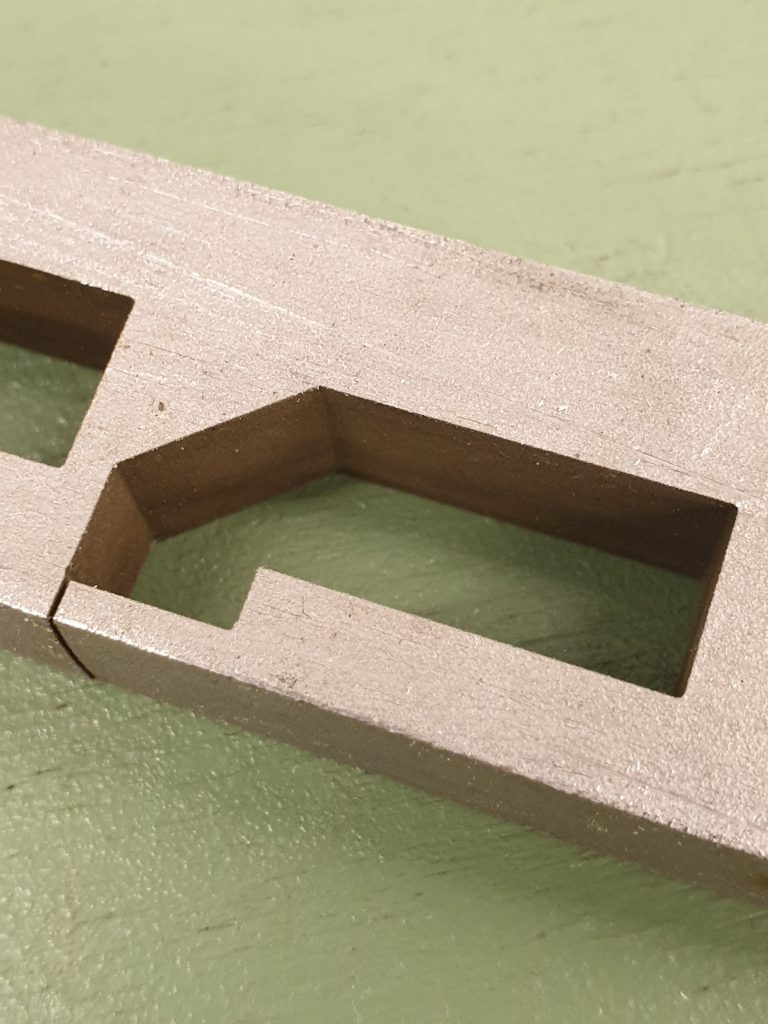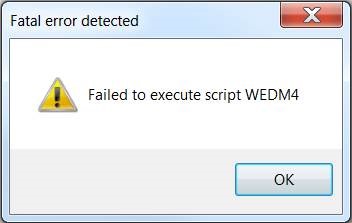How often do you need to replace the filters? That seems like a real pain to clean.
I cut parts almost every day, and change my filters once every few weeks. They last quite long and are inexpensive
What is the liquid? Could it work with tap water, and just let everything wash down the drain, eliminating the filters?
The liquid I use is tap water, which the machine itself deionizes to 15 microSiemens. A closed water system is a must, not only to keep your water bill from exploding, but also for the environment.
Does it outgas into the air?
Yes, the EDM process produces non-toxic but flammable hydrogen gas.
Can you smell it? Do you need a hood, or ventilation?
Hydrogen does not have an odor. The amounts produced are small. I tried to set the Hydrogen on fire, but amounts are so small that I could not get a steady flame started. So no ventilation is required.
What is the shock risk? If the high voltage cables get a hole warn in them, will the power supply detect a leak?
The output of the BX17 arc generator is fully isolated from mains. The maximum output voltage is 150V. Just touching the wire or part does not result in a shock. Touching the wire and part at the same time can.
Have you been shocked by it? If someone touches it while it’s running will they get a shock?
I’ve been “shocked” many times, but its more a tingling feeling than a shock really. THIS DOES NOT MEAN ITS OK TO TOUCH THE MACHINE AND PART WHILE OPERATING. ALWAYS TURN THE MACHINE COMPLETELY OFF BEFORE TOUCHING. SAFETY FIRST.
Does it produce RF that interferes with other electronics (phone, TV, computers, etc) when it’s running?
The EDM process is inherently noisy. If you do not shield your machine, you can disturb radio transmissions. Higher frequencies are not affected (cell phones and WiFi), but it does disturb AM radio.
How hazardous is the waste water/ filter sludge?
If you do not cut materials or alloys with nasty elements in them, the waste is not toxic. However, just as a precaution, I dispose my saturated filters as chemical waste (like batteries and old paint cans and such).
Would it be possible to dry it and reuse it, or burn it in a plasma flame to eliminate it?
Everything is possible, but very unlikely to be practical or economically viable.
What is the feed rate of the wire?
The machine determines that automatically, and strongly depends on the material that you cut. It can be as fast as 30mm/min for thin Aluminum, all the way down to 0.5 mm/min for thick steel.
How much does the wire cost?
About 90 Euros for a 10 Kg spool, depending on where you get it from.
Where do you buy it? Material? Size? Length? Weight? Availability?
Its easy to get online from Ebay, Aliexpress and the like, or find your own local EDM supplier.
What is the condition of the waste wire?
The waste wire is partly eroded, with a coarse surface. Its weakened because of this.
How could the wast wire be reused?
It can be recycled, but not reused as it is damaged and weakened too much.
Does the high-voltage wire polarity effect the wire speed?
Yes it does. For almost all metals the workpiece is positive and the wire negative, except for machining thick aluminium, for such cases it is best to use a reversed polarity, as that helps preventing wire breaks.
When lightning strikes the ground, the ground is damaged, but the clouds are not. If you could reproduce a miniature cloud-like environment, you wouldn’t need wire. For example, if the wire was surrounded by a thin gas (eg argon barrier) barrier, would it eliminate the need to move the wire?
I do not see how that could work. The arc always needs to travel from one conducting electrode to another (e.g. wire to workpiece). So no matter how you shield the wire (like argon in your example), this will not prevent wire erosion.
It would be interesting to know the weights of the wire and cut material, before and after use, to know how much material is being removed from each.
I have never looked into that. As If I would have those numbers, I cant do anything particularly useful with them.
Have you experimented with various voltages, amps, alternating voltages, alternating current, etc to see how it impacts the cut?
Yes, I have performed many experiments. You can choose your parameters in the settings of the BX17 arc generator for for instance rough fast cutting or fine finishing, which cuts slow.
How does this tech scale up? If you had N copies of your machine, could the same power supply be used to cut N pieces at a time? Or would you need N power supplies?
N machines would need N arc generators.
How loud is the machine?
The EDM process itself is very quite. By far the loudest components in the machine are the water pumps.
Do you need ear protection when it’s running?
No, its only the wining of the water pumps that is a bit disturbing.
Besides the wire and filters, are there any other consumables?
The deionisation resin is a consumable too, but it lasts quite long. The wire guides and wire contacts are consumables in industrial machines, but in my machine they last so long that I have never replaced them.
What maintenance is required to run it?
Not much maintenance really. Just topping off water that evaporates, periodic cleaning and replacement of filters and resin.
What speeds and feeds to you use for different materials and thicknesses?
Here are some examples: https://baxedm.com/community/
What is the power consumption to run everything?
About 600-700 Watt, it depends on the settings of the machine.
Can it cut any conductive material?
Yes
Does the entire material need to be conductive? For example, could you spray plastic with a conductive paint and then cut it?
That won’t work, because the EDM process would only erode away the conductive paint and leave the plastic intact.
Pros/Cons verses a water jet?
If the accuracy of a water jet is acceptable for your part, and the material thickness and hardness can be cut on a waterjet, then you should definitely watercut your part instead of EDM. EDM is slower and the consumables are more expensive. There are many parts however that cannot be waterjet cut simply because they require a very high precision and/or the material is too hard or too thick to cut with a waterjet. For those parts EDM is the only way to go. I regularly EDM parts that could have been watercut too, simply because I have access to my own wire-EDM machine and do not have a waterjet.
Could you retrofit an existing CNC machine? Your machine seems to require a very high degree of precision.
You can definitely retrofit old (wire) EDM machines. You can possibly also retrofit a standard CNC mill to a (wire) EDM machine, but that takes considerable effort.





